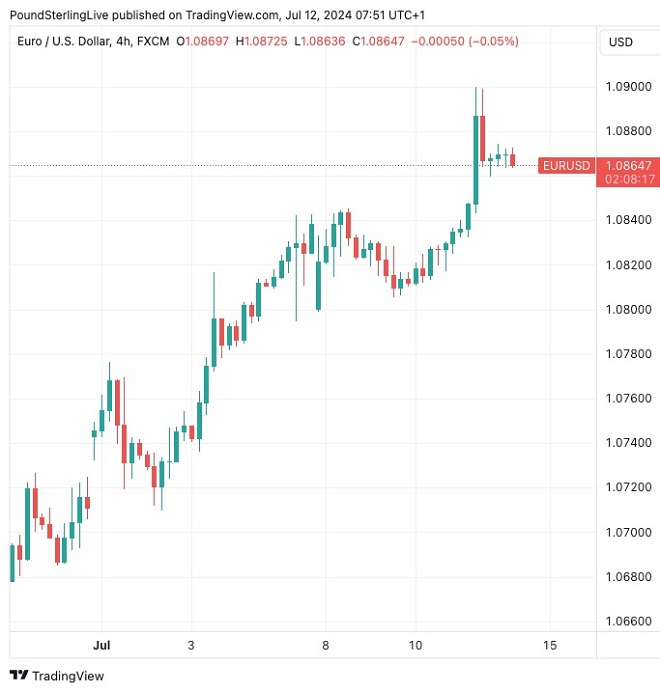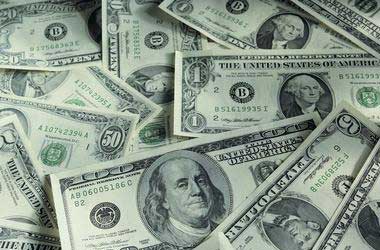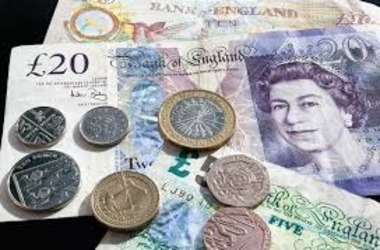 The Euro to Dollar exchange rate recently reached a new five-week high of 1.09, recovering from earlier concerns influenced by French market conditions. Ruta Prieskienyte, Lead FX Strategist at Convera, noted that the Euro-Dollar pair is poised for its third consecutive weekly gain, driven by various economic factors and market reactions.
The Euro to Dollar exchange rate recently reached a new five-week high of 1.09, recovering from earlier concerns influenced by French market conditions. Ruta Prieskienyte, Lead FX Strategist at Convera, noted that the Euro-Dollar pair is poised for its third consecutive weekly gain, driven by various economic factors and market reactions.
Impact of US CPI Report
The Euro’s surge has been largely attributed to a weakening US dollar, which was influenced by a lower-than-expected US Consumer Price Index (CPI) report. This report has bolstered market hopes for a potential rate cut by the Federal Reserve in September. As a result, European stocks and bonds have shown positive trends, reflecting investor optimism.
German Inflation and ECB Rate Cut Speculations
Despite receiving little attention, the easing of German inflation to 2.5% in June has reinforced earlier data, suggesting the possibility of another rate cut by the European Central Bank (ECB) in September. This development has added to the Euro’s upward momentum, as market participants consider the implications of lower inflation on ECB monetary policy.
Euro Index Performance and JPY Impact
The Euro Index, which measures the common currency’s performance against a basket of leading global currencies, remained relatively unchanged on the day but is set for its third consecutive weekly rise. However, the index has been affected by significant losses against the Japanese yen. The EUR/JPY pair experienced a sharp decline of over 1.4% following the US CPI release, despite briefly reaching its highest level since the Euro’s inception moments earlier. This unusual movement has fueled expectations of potential intervention by Japanese officials.
Similar sharp movements were observed in the yen’s spot rates against other major currencies. Additionally, the EUR/SEK pair retreated following the release of a survey indicating that Swedish long-term inflation expectations have edged above the Riksbank’s target of 2%.
GBP/EUR and EUR/USD Movements
The GBP/EUR pair broke past the 200-month Simple Moving Average (SMA) barrier, a level it had struggled to trade above since 2015. Meanwhile, the EUR/USD pair approached the $1.09 resistance level but encountered diminishing interest.

Dollar Yield Advantage and Market Confidence
The recent rate movements have reduced the dollar’s yield advantage over the euro, as the differential between German and US 2-year bond yields broke resistance near -170 basis points, reaching its tightest spread since early March. This narrowing spread has contributed to the Euro’s strength, with the pair on track for its third consecutive weekly gain.
Increased market confidence in the Federal Reserve’s potential move toward rate cuts has raised expectations that the Euro might soon aim for the $1.10 level. This sentiment is further supported by changes in the options market, where the 1-week EUR/USD risk reversal skew has tightened to -0.128 in favor of Euro puts, marking its least bearish position in over a month.
Conclusion
The Euro’s recent performance, marked by a five-week high and consecutive weekly gains, highlights the complex interplay of economic indicators and market sentiment. The weakening US dollar, lower German inflation, and speculations of rate cuts by both the Federal Reserve and the ECB have contributed to the Euro’s upward trajectory. As market participants continue to monitor these developments, the potential for the Euro to reach $1.10 remains a key focus. The evolving dynamics in the currency and options markets will likely play a significant role in shaping the Euro’s future movements.




